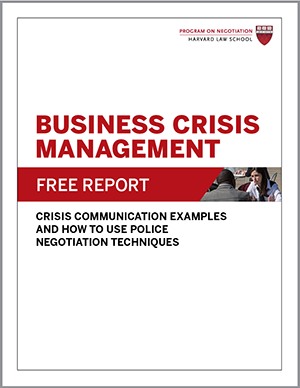
When engaged in a complex group negotiation or dispute, how should you come to agreement? Members might separate into factions and fight to have their voices heard. They might take a vote and let the majority rule. Or they can try to negotiate their way to consensus.
There are almost as many forms of group decision making as there are types of groups. Here, we look at two decision-making processes in the political realm with the aim of identifying best practices as well as pitfalls to avoid.
Crisis Management in D.C.
After talk-radio host Leeann Tweeden accused Minnesota senator Al Franken in November 2017 of sexual harassment during a 2006 USO tour, Senate leaders Mitch McConnell and Chuck Schumer called for an Ethics Committee investigation into the allegations, but neither they nor other senators called for Franken to resign.
As other women began leveling similar accusations against Franken, frustration grew among a group of Democratic female senators, according to Politico. When the number of Franken’s accusers reached six, according to one aide, the senators agreed they would call for Franken’s resignation if another credible story emerged.
On December 6, Politico reported that a former Democratic congressional aide said Franken had tried to forcibly kiss her in 2006, a charge Franken denied. In response to the new accusation, Democratic senator Kirsten Gillibrand of New York tweeted, “I believe he should step aside to let someone else serve.”
Within minutes, five other Democratic female senators also called on Franken to resign. Democratic male senators began following suit. Soon, most Senate Democrats had publicly expressed the belief that Franken should go; some, including Schumer, pressed him privately to do so.
The next day, Franken announced his impending resignation. “It wasn’t coordinated,” Democratic senator Patty Murray of Washington told Politico of the momentum that built toward pushing Franken to resign. “It just happened.”
An informal process. The reportedly organic way in which Franken’s departure was discussed and decided shows what can happen when a group faces mounting pressure to address a crisis. In such cases, momentum may grow inexorably toward consensus.
This type of informal group decision making allows an impassioned faction to be heard, but it risks being criticized as unmethodical, biased, and illegitimate. In the Franken case, Democratic senators deemed formal protocol—an ethics investigation—to be too slow-moving. Groups that regularly face high-stakes or controversial decisions would be wise to set up in advance a formal dispute-resolution process that can be triggered to help them quickly deal with conflict and uncertainty.
The Unique Power of the Swing Voter
Despite controlling the presidency and both houses of Congress in 2017, Republicans failed to achieve signature policy goals in Congress, such as repealing Obamacare, due to a lack of Democratic support and the rebellion of individual Republican “swing voters,” such as senators Susan Collins of Maine, John McCain of Arizona, and Rand Paul of Kentucky.
After a rocky start, Republicans were eager to pass a tax-reform bill by the end of the year. Savvy moderates saw an opportunity to shape the legislation in return for their votes.
Collins influenced the bill more than any other swing voter, negotiating changes equivalent to one-tenth of the bill’s net $1.4 trillion in tax cuts, the Wall Street Journal reported. She pushed to preserve certain tax deductions, expand others, and protect a retirement-contribution exclusion and a property-tax deduction, for example. The Senate passed the tax bill, and then-president Donald Trump signed it into law before the end of the year.
Outsized influence. When group decision making hinges on an up-or-down vote, holdouts may be able to trade their vote for valued concessions. Yet swing voters must wield their power with care, as they risk being maligned as obstructionists or resented for their disproportionate impact. When swing voters gain an outsized influence, other members may try to push them out or change decision-making rules, perhaps in favor of consensus-building techniques.
Toward Better Group Decision Making
The bigger a group negotiation is, the more complex and fractious talks are likely to be. And although consensus building becomes more complicated in larger groups, it’s often needed more than ever.
In fact, consensus building is generally a more effective decision-making tool than a majority-rule vote in groups, write Lawrence E. Susskind and Jeffrey L. Cruikshank in Breaking Robert’s Rules: The New Way to Run Your Meeting, Build Consensus, and Get Results. That’s because the “losers” of a vote often try to sabotage the group’s decision. By contrast, when a group seeks to reach an agreement that’s as close to unanimous as possible (the goal of consensus building), the final deal is much more likely to endure.
To develop consensus, fractious parties need to recognize the value of looking for tradeoffs across issues. If a person objects to a certain proposal, they should suggest ways to make it more acceptable without making it worse for others. Appointing a neutral facilitator or mediator who can help parties focus on their similarities rather than their differences can also advance a consensus-building approach.
What processes have you found to be useful in group decision making?




